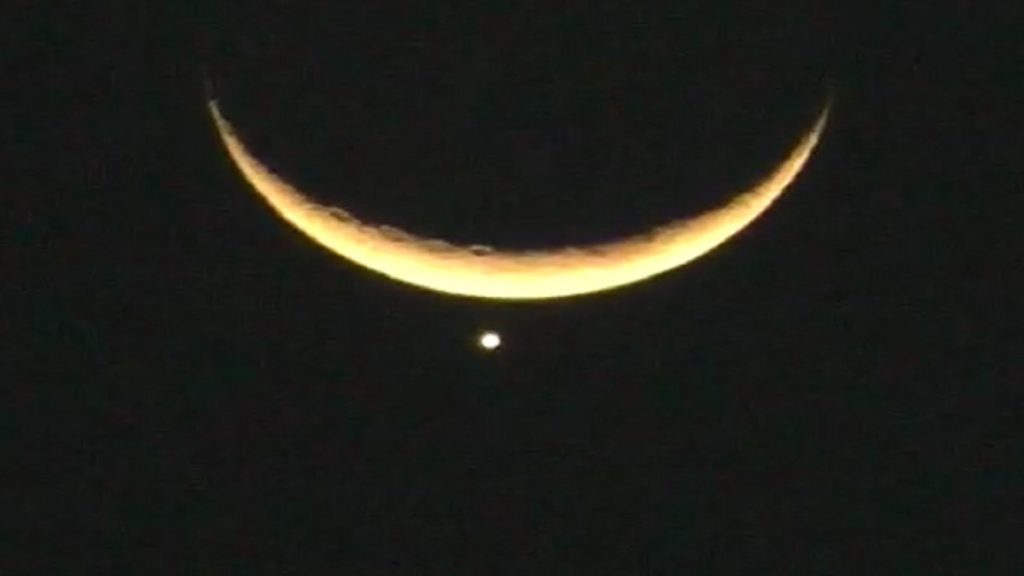New Delhi: The Solar system along with 9 planets and its numerous enigmas continue to puzzle the mankind. In one of the rare conjunctions in the sky tonight, Venus seemed to be ‘disappearing’ behind the Moon.
Though, the two planets are miles apart but as they align together in a symmetrical line, this makes it a puzzle for hundreds of thousands of curious skywatchers. As the two celestial objects moved closer to each other in a rare sight tonight, the conjunction was visible in many parts of the world.
Venus is one of the brightest planet in the Solar System because if reflects 70% of sunlight back and is also the closest to Planet Earth.
As Venus & Moon aligned in the same line, the former looked slowly disappearing behind the dark edges of Moon. As the Moon came in between Earth & Venus, the brightness of latter was expected to be curtailed by nearly 250 times.
This movement of celestial bodies & overlapping of each other is called waxing crescent stage and it is visible until half of Moon’s surface is illuminated.
A couple of office goers were seen clicking pictures of the rare sight in sky, while returning home after office work.
March 28, a key date for skywatchers
For the skywatchers and space enthusiasts, March 28 will be a big day for watching the movement & ‘overlapping’ of celestial bodies.
CBS News reports that five planets namely Jupiter, Mercury, Venus, Uranus and Mars will align together on March 28, creating a rare spectacle in the sky.
All these planets are set to align between March 25 – March 30 as Earth will enter equinox. However, the sighting of this rare conjunction in sky will be best visible & most clear on March 28 as 5 five planets will cross ways and come in one line.
According to Astronomer Gary Swangir, three planets Venus, Mars & Jupiter will be visible with the naked eye while for Mercury & Uranus , you will require binoculars or a telescope.

